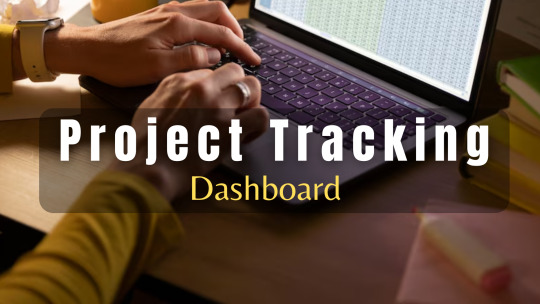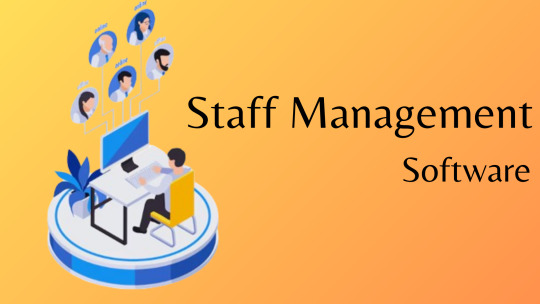Don't wanna be here? Send us removal request.
Text
The Onboarding Blueprint: A Foolproof Employee Checklist

Employee onboarding is a critical process that sets the tone for a new hire’s experience within your company. A well-executed onboarding strategy not only helps new employees feel welcomed but also ensures they become productive members of the team. To make this transition smooth and effective, having a structured employee checklist is essential.
Why An Onboarding Checklist Matters
When an employee joins your organization, the first few days are crucial in forming their impression of the workplace. A comprehensive onboarding process helps new hires quickly adapt to their roles while understanding company policies, culture, and expectations. Using an employee checklist ensures that no crucial steps are overlooked, leading to higher retention rates and better job satisfaction.
Step 1: Pre-Onboarding Preparations
The onboarding process starts even before the new employee steps through the door. Start by sending a welcome email that includes essential information like reporting time, dress code, and necessary documents. Set up their workstation with the required equipment, including a laptop, phone, and stationery. Preparing IT credentials and login information ahead of time also helps eliminate first-day technical issues.
Step 2: First-Day Orientation

The first day should be dedicated to introducing the employee to the company culture and their team members. Start with a warm greeting and a tour of the office. Introduce the new hire to their manager and teammates. An orientation session should cover company policies, code of conduct, and workplace safety guidelines.
Providing a remote onboarding package containing the employee handbook, company values, and role expectations helps the new hire feel more confident. Make sure the checklist includes verifying completed paperwork, including tax forms and identification verification.
Step 3: Role-Specific Training
Customized training sessions are vital for helping employees understand their tasks and responsibilities. Schedule hands-on training sessions that are specific to their role. Assign a mentor who can guide them through daily tasks and answer any questions. This peer support system will boost their confidence and integration into the team.
Step 4: Setting Goals and Expectations

Clear communication skills of job expectations and performance metrics is vital. During the first week, schedule one-on-one meetings to discuss short-term and long-term goals. This step helps the new hire understand how their work contributes to the organization’s overall success. Add these meetings to your employee checklist to ensure consistent follow-ups.
Step 5: Continuous Support and Evaluation
Onboarding doesn’t end after the first week. Regular check-ins during the first three months are crucial to address any challenges or concerns. Schedule feedback sessions to discuss progress and areas for improvement. Adjust the checklist to include reminders for ongoing training and development opportunities.
You can also watch: EmpMonitor: Manage Remote Work Easily
youtube
Final Words:
Building an effective onboarding process requires careful planning and execution. An employee checklist is an invaluable tool that ensures every step is completed efficiently. By investing time and effort into onboarding, you create a positive first impression and set the stage for long-term employee success.
Implementing a foolproof employee checklist will not only boost productivity but also increase job satisfaction and retention rates. Make onboarding a priority, and watch your new hires thrive from day one.
1 note
·
View note
Text
Eat The Frog Technique: Let’s Know What It Really Is?

The "Eat the Frog" technique is a productivity strategy popularized by author and motivational speaker Brian Tracy. The concept is derived from a quote attributed to Mark Twain, who famously said, "If it's your job to eat a frog, it's best to do it first thing in the morning. And if it's your job to eat two frogs, it's best to eat the biggest one first." In essence, the technique encourages individuals to tackle their most challenging or unpleasant tasks—the "frogs"—early in the day, thereby freeing up mental energy and momentum for the rest of the day's activities.
The rationale behind the Eat the Frog technique is rooted in the principles of prioritization and procrastination avoidance. By identifying and prioritizing the most important tasks—the ones that will have the greatest impact on one's goals or objectives—individuals can overcome the tendency to procrastinate and ensure that critical tasks are completed promptly. Moreover, by addressing challenging tasks first, individuals can experience a sense of accomplishment and momentum that carries over into subsequent tasks, boosting overall productivity and motivation.
Implementing the Eat the Frog technique involves several steps. First, individuals should identify their most important or challenging tasks for the day, taking into account deadlines, goals, and overall priorities. Next, they should schedule dedicated time blocks for tackling these tasks, preferably early in the morning when energy levels are highest and distractions are minimal. Finally, individuals should commit to following through on their plan, focusing on one task at a time, and resisting the urge to procrastinate or multitask.
What Does Eat The Frog Mean?
"Eat the frog" is a metaphorical expression coined by author Brian Tracy, inspired by a quote attributed to Mark Twain. In the context of productivity and time management, it refers to tackling the most challenging or unpleasant task first thing in the morning, akin to "eating a frog." The idea is that once the most difficult task is out of the way, the rest of the day's activities feel more manageable and less daunting. By confronting the most demanding task head-on, individuals can overcome procrastination, boost productivity, and maintain momentum throughout the day.
Eat the Frog Productivity:

The "Eat the Frog" productivity method emphasizes prioritizing tasks based on importance rather than urgency. By identifying the most crucial or challenging task and completing it early in the day, individuals can maximize productivity and achieve greater success in their endeavors.
This approach helps individuals focus their energy on tasks that align with their goals and values, rather than getting bogged down by trivial or less impactful activities. By consistently applying the "Eat the Frog" principle, individuals can develop a habit of proactive task management, leading to increased efficiency, reduced stress, and improved overall productivity.
Eat the Frog Time Management
In the realm of time management, "Eat the Frog" is a powerful strategy for prioritizing tasks and making the most of limited time resources. By tackling the most important or challenging task first, individuals can optimize their productivity and ensure that critical objectives are met. This approach helps individuals avoid procrastination and decision fatigue by addressing significant tasks when energy levels are highest.
Employee Time Management Software
The Employee time management software is a valuable tool for businesses seeking to improve productivity, track work hours, and optimize resource allocation. These software solutions typically offer features such as time tracking, task management, scheduling, and reporting, allowing employers to monitor employee productivity, identify areas for improvement, and streamline administrative processes.
By automating time-related tasks and providing real-time insights into employee activities, time management software helps businesses increase efficiency, reduce labor costs, and ensure compliance with labor regulations. Additionally, these tools often integrate with other business systems, such as payroll and project management software, enabling seamless data exchange and comprehensive workforce management.
Workforce Management Software

Workforce management software encompasses a range of tools and solutions designed to optimize the performance and productivity of an organization's workforce. These software platforms typically include features such as employee scheduling, time and attendance tracking, labor forecasting, payroll management, and compliance monitoring. By centralizing workforce-related processes and data, workforce management software helps businesses streamline operations, reduce administrative burdens, and improve decision-making.
Time-tracking software enables individuals and organizations to monitor and record the time spent on various tasks, projects, or activities. These software solutions typically offer features such as automatic time capture, manual time entry, timesheet management, and reporting, allowing users to track billable hours, measure productivity, and analyze time usage patterns.
You Can Also Watch:
youtube
Conclusion
In conclusion, the Eat the Frog technique offers a powerful approach to productivity and time management, emphasizing the importance of tackling the most challenging tasks first. By confronting difficult or unpleasant tasks early in the day, individuals can overcome procrastination, boost productivity, and maintain momentum throughout the day. This strategy helps individuals prioritize their activities based on importance rather than urgency, ensuring that critical objectives are met and meaningful progress is made toward their goals.
#eat the frog technique#frog productivity#time management#time management software#time tracking software#workforce management software#Youtube
0 notes
Text
Work From Anywhere: The Ultimate Guide To Flexible Work Arrangements

It is true that gone are the days of rigid schedules and fixed office spaces. Instead, organizations are increasingly embracing flexibility as a means to adapt to the diverse needs and preferences of their workforce.
At its core, a Flexible Work Environment encompasses a range of practices and policies that allow employees greater autonomy and control over when, where, and how they work. This could include options such as remote work arrangements, flexible scheduling, compressed workweeks, or even job sharing. By offering employees the freedom to customize their work experience to better suit their individual circumstances, organizations can foster a culture of trust, empowerment, and work-life balance.
One of the key benefits of a Flexible Work atmosphere is its ability to enhance employee satisfaction and well-being. By allowing employees to better manage their work-life commitments, whether it's caring for family members, pursuing personal interests, or avoiding lengthy commutes, organizations can help reduce stress and burnout while promoting overall happiness and job satisfaction.
How To Select Workforce Management Software?
Identify Your Needs: Begin by clearly defining your organization's specific requirements and objectives. Consider factors such as the size of your workforce, the nature of your industry, your budget, and any unique challenges or pain points you're looking to address.
Evaluate Features: Once you've identified your needs, research different workforce management software options and evaluate their features and capabilities. Look for features such as time and attendance tracking, scheduling, leave management, performance management, payroll integration, and reporting and analytics. Determine which features are essential for your organization and prioritize them accordingly.
Consider Integration: Assess how the workforce management software integrates with your existing systems and processes, such as HRIS (Human Resource Information System), payroll software, and other relevant tools. Seamless integration can streamline workflows, reduce data entry errors, and improve overall efficiency.
Ease Of Use: Choose workforce management software that is intuitive and user-friendly. Consider factors such as ease of implementation, training requirements, and user support. The software should be accessible to employees of all levels of technical proficiency and should not require extensive training to use effectively.
Scalability: Select workforce management software that can scale with your organization's growth and evolving needs. Consider factors such as the ability to add or remove users, customize features, and adapt to changing business requirements over time.
Is Hybrid Work Schedule Beneficial For Employees?
A hybrid work schedule can be highly beneficial for employees. This model offers a blend of remote and in-office work, providing flexibility and autonomy while also fostering collaboration and connection.
For many employees, hybrid work schedules offer the best of both worlds, allowing them to enjoy the perks of remote work such as eliminating commute times, saving on transportation costs, and having a more flexible work-life balance, while also providing opportunities for face-to-face interaction, team building, and access to office resources.
Additionally, hybrid work schedules can cater to individual preferences and needs, accommodating those who thrive in a remote environment as well as those who prefer the structure and social interaction of an office setting. By offering flexibility and choice, hybrid work schedules can enhance employee satisfaction, well-being, and productivity, ultimately leading to greater retention rates and organizational success.
Benefits Of Flexible work

For employees, flexibility in work arrangements provides greater autonomy and control over their schedules, allowing them to better balance work and personal responsibilities. This can lead to reduced stress, improved work-life balance, and enhanced overall well-being.
Additionally, flexible work arrangements can eliminate the need for long commutes, saving time and money, and reducing environmental impact. Moreover, flexible work arrangements can accommodate diverse needs and preferences, enabling employees to work during their most productive hours and in environments that suit their individual workstyles.
For employers, offering flexible work arrangements can lead to increased employee satisfaction, engagement, and retention. Employees who have greater control over their schedules are often more motivated and productive, leading to improved performance and results.
Flexible work arrangements can also attract top talent, as they demonstrate a commitment to supporting employees' work-life balance and well-being. Additionally, flexible work arrangements can enhance organizational agility and resilience, enabling companies to adapt to changing business needs and market conditions more effectively. Also Watch: Leading Employee Engagement and Workforce Productivity Tool
youtube
Bottom line!
For employees, the Flexible Work Environment offers greater autonomy, work-life balance, and flexibility, empowering them to optimize their productivity and well-being. By providing the freedom to work when, where, and how they choose, organizations can attract and retain top talent, foster a culture of trust and empowerment, and enhance overall job satisfaction and engagement.
For employers, Flexible Work offers a wealth of opportunities to drive organizational success. By embracing flexibility, organizations can boost productivity, creativity, and innovation, while also reducing costs, improving retention rates, and attracting top talent.
Moreover, flexible work arrangements enable organizations to adapt to changing market conditions, respond to individual needs and preferences, and cultivate a more inclusive and diverse workforce.
#Flexible Work Environment#flexible work arrangement#flexible schedule#hybrid work schedule#flexible work#Youtube
0 notes
Text
Teamwork Makes The Dream Work Boost Productivity With Powerful Tools

The Tools of Productivity for your Team have become indispensable assets, revolutionizing the way teams communicate, collaborate, and coordinate their efforts. These tools encompass a diverse range of software applications and platforms designed to streamline workflows, facilitate real-time collaboration, and enhance overall productivity.
At the heart of Team Productivity Tools lies the concept of seamless communication. Whether teams are spread across different locations or working remotely, these tools bridge the gap by providing instant messaging, video conferencing, and virtual meeting capabilities. By enabling teams to connect effortlessly, regardless of geographical barriers, these tools foster a sense of cohesion and collaboration that transcends physical boundaries.
Moreover, Team Productivity solutions offer a centralized platform for project management and task organization. With features such as task assignment, deadline tracking, and progress monitoring, these tools empower teams to stay organized and focused amidst the complexities of modern work environments. By providing visibility into project timelines and responsibilities, these tools ensure accountability and transparency, driving productivity and efficiency.
Collaborative document editing and sharing are another hallmark of Team Productivity solutions . By enabling multiple team members to work on the same document simultaneously, these tools streamline the editing process and eliminate version control issues. Additionally, cloud storage capabilities ensure that documents are accessible anytime, anywhere, facilitating seamless collaboration across distributed teams.
Top Team Productivity Tools
Choosing the best team productivity solutions depends on the specific needs and preferences of your team, as well as the nature of the projects you're working on. However, here are some widely acclaimed tools that are known for their effectiveness in enhancing collaboration and productivity:
Slack: Slack is a popular messaging app for teams that offers real-time communication through channels, direct messaging, and file sharing. Its customizable notifications, integration with other productivity apps, and search functionality make it a powerful tool for keeping teams connected and informed. Asana: Asana is a project management tool that helps teams organize tasks, track progress, and collaborate effectively. Its intuitive interface, customizable workflows, and timeline view make it easy to plan and manage projects of any size.

EmpMonitor: It is a comprehensive employee monitoring tool designed to enhance productivity and security in the workplace. It offers features such as real-time activity tracking, website and application monitoring, keystroke logging, and screen recording. With its robust capabilities, EmpMonitor provides valuable insights into employee behavior and performance.
Microsoft Teams: Microsoft Teams is a collaboration platform that integrates chat, video conferencing, file sharing, and project management capabilities. Its seamless integration with other Microsoft Office apps and robust security features make it a popular choice for businesses of all sizes.
Google Workspace (Formerly G Suite): Google Workspace offers a suite of productivity tools, including Gmail, Google Drive, Google Docs, Google Sheets, and Google Meet. Its cloud-based platform allows for real-time collaboration on documents, spreadsheets, and presentations, making it ideal for remote teams.
Why Is Employee Productivity Tracker Essential For A Company?
Employee productivity trackers are essential for companies because they provide valuable insights into how effectively resources are being utilized and how efficiently tasks are being completed. By monitoring employee productivity, companies can identify bottlenecks, inefficiencies, and areas for improvement in their workflow processes.
This data-driven approach allows for targeted interventions and optimizations, ultimately leading to increased productivity and performance across the organization. Additionally, productivity trackers help ensure accountability and transparency by providing visibility into individual and team performance metrics. This fosters a culture of accountability and motivates employees to stay focused and productive.
Moreover, productivity trackers enable companies to make informed decisions about resource allocation, workload distribution, and performance evaluation, leading to better resource management and strategic planning. Overall, employee productivity trackers play a crucial role in driving operational excellence, optimizing performance, and achieving business objectives in today's competitive marketplace.
Can A Company Run Effectively Without Workforce Management Software.
While it's possible for a company to run effectively without workforce management software, implementing such software can greatly enhance operational efficiency, productivity, and employee satisfaction. Without workforce management software, companies may rely on manual processes for tasks such as scheduling, time tracking, and payroll management, which can be time-consuming and prone to errors.
Additionally, without automated tools for forecasting staffing needs and managing employee schedules, companies may struggle to optimize staffing levels and allocate resources effectively. Also Watch: Leading Employee Engagement and Workforce Productivity Tool
youtube
Closing Thoughts!
The exploration of Team Productivity Tools reveals a landscape where collaboration meets efficiency, and innovation thrives on seamless communication. These tools serve as the cornerstone of modern workplace dynamics, empowering teams to transcend geographical barriers and achieve unprecedented levels of productivity and collaboration.
From messaging platforms and project management tools to collaborative document editing and virtual meeting solutions, Team Productivity solutions offer a diverse array of functionalities tailored to meet the evolving needs of today's dynamic workforce.
As we reflect on the myriad benefits of Team Productivity solutions, it becomes evident that they represent more than just technological innovations—they embody a paradigm shift in how teams collaborate, communicate, and coordinate their efforts.
#Team Productivity Tools#productivity tools#workplace productivity tools#employee productivity tracker#workforce management software#Youtube
0 notes
Text
Top 5 Reasons: Why Should A Business Use The Overtime Calculator

Whether you're an hourly worker seeking fair compensation for your extra hours or an employer striving to ensure compliance with labor laws and streamline payroll processes, the Calculator of Overtime is your trusted companion in navigating the complexities of overtime pay.
At its essence, the Overtime Calculator serves as a beacon of clarity and fairness in the realm of compensation. It takes into account key variables such as the regular hourly rate and the number of hours worked beyond the standard workweek, typically defined as 40 hours in many jurisdictions. With just a few clicks or inputs, users can swiftly and accurately determine the amount of overtime pay owed, providing peace of mind and transparency for both parties involved.
For employees, it offers a sense of empowerment and assurance in knowing that their hard work and extra efforts are duly compensated. No longer left in the dark about their overtime pay, employees can confidently advocate for fair treatment and ensure that they receive the wages they rightfully deserve.
How Employee Time Tracking Software Will Help Businesses?
Employee time tracking software offers numerous benefits to businesses across various industries, facilitating efficiency, accuracy, and productivity in workforce management. Here's how it can help:
Improved Accuracy: Time tracking software eliminates the need for manual timekeeping, reducing the risk of human error in recording working hours. Employees can clock in and out electronically, ensuring accurate tracking of their time spent on tasks and projects.
Efficient Payroll Processing: By automating time tracking, businesses can streamline payroll processing. Time data collected by the software can be seamlessly integrated into payroll systems, reducing administrative overhead and minimizing the likelihood of payroll errors.
Resource Allocation And Planning: With real-time insights into employee hours worked, managers can effectively allocate resources and plan work schedules. They can identify trends in employee productivity, monitor project progress, and make informed decisions to optimize workforce utilization.
Top 5 Reasons Why Should An Business Use The Overtime Calculator

Accurate Overtime Calculation: Utilizing an Calculator of Overtime ensures precise calculation of overtime pay for employees. By inputting the regular hourly rate and the number of hours worked beyond the standard workweek, typically 40 hours, businesses can avoid errors and discrepancies in overtime compensation, promoting fairness and compliance with labor laws.
Transparency And Employee Trust: Implementing an Calculator of Overtime fosters transparency in the workplace, enhancing employee trust and morale. When employees have access to a reliable tool for calculating overtime pay, they feel reassured that their extra efforts are accurately recognized and compensated, leading to greater job satisfaction and engagement.
Efficiency In Payroll Processing: It streamline payroll processing by automating the calculation of overtime pay. Instead of manually computing each employee's overtime hours and rates, businesses can save time and reduce administrative burden by utilizing a standardized and efficient method for overtime calculation, ensuring accuracy and consistency in payroll management.
Compliance With Labor Laws: Businesses are obligated to adhere to labor laws and regulations regarding overtime pay. Using a Calculator of Overtime helps businesses maintain compliance with these laws by accurately determining overtime pay rates and ensuring that employees are compensated according to legal requirements. This reduces the risk of legal penalties and labor disputes associated with non-compliance.
Is Investing In An Overtime Pay Calculator Worthwhile?
Investing in an overtime pay calculator is undoubtedly worthwhile for businesses seeking to streamline their payroll processes, ensure compliance with labor laws, and maintain transparency and fairness in their compensation practices. By automating the calculation of overtime pay, businesses can save time and reduce the risk of errors associated with manual calculations.
This not only enhances efficiency in payroll processing but also minimizes the potential for disputes or grievances from employees regarding their compensation. Additionally, an overtime pay calculator helps businesses adhere to labor regulations regarding overtime pay rates and hours worked, mitigating the risk of non-compliance and associated legal consequences. Also Watch: Leading Employee Engagement and Workforce Productivity Tool
youtube
Wrapping It Up!
In conclusion, the implementation of an Overtime Calculator represents a pivotal step forward in modern workforce management, offering businesses a myriad of benefits that extend far beyond the realm of payroll processing. Throughout this exploration, we've delved into the numerous advantages that such a tool brings to the table, from ensuring accuracy and compliance to fostering transparency and trust among employees.
By investing in a Calculator of Overtime, businesses can effectively streamline their payroll processes, reducing administrative burdens and minimizing the risk of errors associated with manual calculations. This not only saves time and resources but also enhances overall efficiency in payroll management, allowing businesses to focus their energies on more strategic initiatives.
#Overtime Calculator#calculate overtime#overtime pay calculator#employee time tracking#workforce management software#Youtube
0 notes
Text
The Ultimate Productivity Hack: Mastering Time Mapping For Success

The powerful method for structuring your day is none other than mapping your time. It is a powerful productivity technique that involves structuring your day into designated blocks of time, each dedicated to specific tasks or activities. This method provides a visual representation of how you plan to allocate your time, allowing you to prioritize tasks, maintain focus, and make efficient use of your day.
Let’s understand more about it!
What Is Time Mapping?
The Time mapping is a strategic time management technique that involves visually mapping out and organizing your day or schedule into specific blocks of time dedicated to different tasks or activities.
The process typically starts with identifying your goals, priorities, and tasks for the day or week. Then, you allocate specific time slots in your schedule to focus on each task, ensuring that you dedicate uninterrupted time and attention to them.
The goal of time-mapping is to create a structured and organized plan for how you will spend your time, allowing you to maximize productivity, prioritize tasks effectively, and manage your workload efficiently. By breaking down your day into manageable chunks and assigning specific time slots for each task, you can better manage your time, reduce procrastination, and stay focused on what needs to be done.
Is Using Employee Time Tracking Software For Mapping Time Worth It?
Using employee time tracking software for time-mapping can be highly beneficial for businesses looking to optimize productivity, track performance, and improve efficiency. Here are some reasons why it can be worth it:
Accurate Time Tracking: Time tracking software allows employees to accurately record the time spent on various tasks and projects. This helps businesses gain insights into how time is being allocated and identify areas for improvement.
Resource Allocation: By tracking time spent on different tasks, managers can better allocate resources, assign tasks effectively, and ensure that workloads are balanced among team members.
Productivity Monitoring: Time tracking software provides real-time visibility into employee productivity levels. Managers can monitor progress on tasks, identify bottlenecks or inefficiencies, and provide timely feedback or support as needed.
Billing And Invoicing: For businesses that bill clients based on hours worked, time tracking software simplifies the process of generating accurate invoices and tracking billable hours, reducing the risk of underbilling or overbilling clients.
Performance Evaluation: Time tracking data can be used as a basis for performance evaluations and employee feedback discussions. Managers can assess individual and team performance, identify top performers, and recognize areas for improvement.
How To Create A Time Mapping Template?

Creating a time mapping template involves several steps to ensure it effectively captures your schedule and tasks. Begin by outlining your typical daily or weekly schedule, including designated time slots for work, breaks, meals, and any recurring commitments.
Next, identify your key tasks, projects, or goals for each day or week and allocate specific time blocks in your schedule to focus on these activities. Consider your energy levels and peak productivity times when assigning tasks to different parts of the day. Additionally, use color-coding or visual cues to differentiate between different types of tasks or activities, such as work-related tasks, personal errands, or leisure activities.
Once you have drafted your time-mapping template, review and refine it as needed to ensure it accurately reflects your priorities, commitments, and workflow preferences. Experiment with different formats or tools, such as digital calendars, planners, or time management apps, to find the format that works best for you.
Value Of Track Working Hours?
For employees, tracking working hours ensures that they are fairly compensated for the time they dedicate to their work. It provides transparency and accountability, allowing employees to accurately record the hours they have worked and ensuring they receive proper payment for overtime or additional hours.
From an employer perspective, tracking working hours enables better resource allocation and workload management. It provides insights into how time is being spent on various tasks and projects, helping managers identify inefficiencies, streamline processes, and allocate resources more effectively. Also Watch: Leading Employee Engagement and Workforce Productivity Tool
youtube
Ending It Up!
In conclusion, Time mapping emerges not only as a methodological tool but as a philosophy that transforms the way we perceive and utilize time. Throughout this exploration of time mapping, we've delved into its intricacies, unveiling its potential to revolutionize productivity, enhance efficiency, and bring clarity to the chaos of our daily lives.
By systematically organizing our time into purposeful blocks and allocating it with intentionality, it offers a pathway to reclaim control over our schedules, priorities, and ultimately, our lives. It empowers us to transcend the limitations of mere time management and embrace a holistic approach to productivity that honors both our professional aspirations and personal well-being.
0 notes
Text
The Future Of Work Is Fair: Why Workload Distribution Matters More Than Ever

Optimizing work distribution is crucial for enhancing productivity, reducing stress, and achieving organizational goals. This article delves into the realm of workload distribution, uncovering innovative strategies and best practices to streamline workflows and maximize efficiency in any workplace setting.
By understanding the principles of effective workload division and implementing actionable techniques, businesses can empower their teams to work smarter, not harder, ultimately driving success and fostering a culture of collaboration and excellence. Join us as we explore the key principles and practical strategies for achieving optimal workload division and unlocking the full potential of your workforce.
What Is Work Distribution?
Work distribution refers to the allocation and assignment of tasks, responsibilities, and projects among individuals or teams within an organization. It involves distributing the workload in a balanced and equitable manner to ensure that each team member has a manageable amount of work that aligns with their skills, capacity, and availability. Effective work distribution aims to optimize productivity, minimize bottlenecks, and prevent overburdening or burnout among team members.
It often involves strategic planning, communication, and coordination to ensure that tasks are assigned appropriately and that resources are allocated efficiently to meet organizational objectives. By implementing sound work distribution practices, organizations can enhance efficiency, promote collaboration, and achieve better outcomes across projects and initiatives.
Is Workforce Management Software Beneficial To Analyze Work Efficiency?
workforce management software can be highly beneficial for analyzing work efficiency within an organization. These software solutions typically offer a range of features and functionalities designed to track and analyze various aspects of workforce performance, such as time and attendance, productivity metrics, task completion rates, and resource allocation.
By capturing and consolidating data from different sources, workforce management software provides valuable insights into how employees are utilizing their time, where productivity bottlenecks may exist, and how resources can be optimized for better efficiency.
Additionally, workforce management software often includes reporting and analytics tools that allow managers and stakeholders to generate customizable reports and dashboards, providing visibility into key performance indicators (KPIs) and trends over time. This data-driven approach enables organizations to identify areas for improvement, make informed decisions about resource allocation and staffing levels, and implement targeted interventions to enhance work efficiency.
How To Balance Unbalanced Workload?

Balancing an unbalanced workload within a team or organization requires a strategic approach and effective communication to ensure that tasks are distributed fairly and efficiently. First and foremost, it's essential to assess the workload division among team members, identifying any disparities or areas of imbalance. This may involve analyzing the volume and complexity of tasks assigned to each individual, as well as considering factors such as skills, experience, and availability.
Once the workload imbalance has been identified, the next step is to reallocate tasks and responsibilities in a manner that promotes equity and maximizes productivity. This may involve redistributing tasks among team members based on their strengths and capabilities, leveraging cross-training opportunities to build skill diversity within the team, and prioritizing tasks based on urgency and importance.
Tips To Managing Workloads
Prioritize Tasks: Start by identifying tasks that are urgent and important, and focus on completing them first. Use tools like Eisenhower's Urgent/Important Principle to categorize tasks based on their priority level.
Set Realistic Goals: Be realistic about what you can accomplish within a given timeframe and set achievable goals. Break large tasks into smaller, manageable steps to avoid feeling overwhelmed.
Delegate Tasks: Delegate tasks to team members who have the necessary skills and capacity to handle them. Effective delegation not only lightens your workload but also helps develop the skills and confidence of your team members.
Communicate Expectations: Clearly communicate deadlines, expectations, and priorities to team members to ensure everyone is on the same page. Regular check-ins and status updates can help keep everyone accountable and informed. Also Watch: Leading Employee Engagement and Workforce Productivity Tool
youtube
Final Words!
Effective workload distribution is a cornerstone of organizational success, ensuring that tasks are assigned equitably and efficiently to maximize productivity and employee well-being. Throughout this article, we've explored the importance of balancing workloads, the challenges associated with workload division, and strategies for managing workloads effectively.
By prioritizing tasks, setting realistic goals, delegating responsibilities, and fostering clear communication, organizations can optimize workload division and create a supportive work environment where employees can thrive.
#Workload Distribution#work distribution#unbalanced workload#track computer activity#workforce management software#Youtube
0 notes
Text
From Chaos To Crystal Clear: How A Project Tracking Dashboard Saves The Day

Staying organized, informed, and on track is essential for achieving success. Amidst the myriad of tools available, project tracking dashboards emerge as indispensable assets, empowering teams to streamline workflows, monitor progress, and make informed decisions with ease.
In this comprehensive article, we embark on a journey to get some great knowledge about project tracking dashboards. From empowering project managers with real-time insights to enhancing collaboration among team members, these dynamic tools serve as the cornerstone of efficient project execution.
What Is Project Tracking?
Project tracking refers to the process of monitoring and managing the progress, performance, and resources of a project throughout its lifecycle. It involves systematically collecting data, analyzing metrics, and communicating updates to stakeholders to ensure that the project stays on course and meets its objectives.
Project tracking encompasses various aspects, including tracking tasks, timelines, budgets, milestones, and risks. By continuously monitoring key indicators and comparing them against predefined benchmarks or targets, project managers can identify potential issues early, make informed decisions, and take corrective actions to keep the project on track.
Effective project tracking provides stakeholders with visibility into the project's status, promotes accountability among team members, and facilitates timely adjustments to optimize performance and outcomes. Whether through manual tracking methods or specialized software tools, project tracking plays a crucial role in ensuring project success by enabling proactive management and alignment with organizational goals.
Can A Project Management Solution Help Business In Growth?
A project management solution can significantly contribute to the growth and success of a business in several ways. By providing tools and frameworks to streamline processes, improve collaboration, and enhance efficiency, project management solutions enable businesses to effectively manage their projects, resources, and operations.
Firstly, project management solutions help businesses optimize resource allocation by allowing them to allocate personnel, budget, and time resources more effectively. This ensures that resources are utilized efficiently, reducing waste and maximizing productivity across the organization. Additionally, for your employees you may use the employee tracking tool to know their daily work productivity.
Secondly, project management tool promote better communication and collaboration among team members, stakeholders, and departments. Through features such as task assignments, file sharing, and real-time messaging, project management solutions facilitate seamless coordination and information exchange, fostering a culture of teamwork and alignment towards common goals.
Moreover, project management solutions enable businesses to better track and manage project timelines, milestones, and deliverables. By providing visibility into project progress and performance, these solutions allow businesses to identify bottlenecks, address issues promptly, and make data-driven decisions to ensure projects are completed on time and within budget.
Benefits For Company By Project Management Tracking

Improved Planning And Organization: Project management tracking enables companies to develop comprehensive project plans, including timelines, milestones, and resource allocation. This helps in setting clear objectives, identifying dependencies, and allocating resources effectively, leading to more organized and efficient project execution.
Enhanced Communication And Collaboration: With project management tracking tools, teams can communicate and collaborate more effectively. Centralized platforms allow for real-time updates, document sharing, and task assignments, fostering collaboration among team members regardless of their location. This leads to better coordination and smoother workflows, reducing the likelihood of misunderstandings or delays.
Better Resource Management: Project management tracking helps companies optimize resource utilization by providing visibility into resource availability, workload, and allocation. By accurately tracking resource usage and capacity, companies can avoid overloading team members, minimize idle time, and ensure that resources are utilized efficiently across projects.
Increased Accountability And Transparency: Project management tracking promotes accountability among team members by clearly defining roles, responsibilities, and expectations. With transparent access to project progress, milestones, and deadlines, team members are more accountable for their contributions, leading to improved performance and outcomes.
Effective Risk Management: By identifying potential risks and issues early in the project lifecycle, project management tracking allows companies to proactively mitigate risks and minimize their impact on project timelines and budgets. Regular monitoring and reporting of project metrics enable stakeholders to make informed decisions and implement contingency plans as needed. Also Watch: Leading Employee Engagement and Workforce Productivity Tool
youtube
Final Words!
The adoption of project tracking dashboards emerges as a transformative tool in modern project management, offering organizations unparalleled visibility, control, and efficiency in executing their initiatives. Throughout this exploration, we've delved into the myriad benefits and functionalities of project tracking dashboards, highlighting their pivotal role in optimizing project performance and driving organizational success.
Project tracking dashboards empower teams to streamline workflows, monitor progress, and make informed decisions in real-time, laying the groundwork for efficient project execution. By consolidating key project metrics, milestones, and resource allocations into a centralized platform, these dashboards foster collaboration, accountability, and transparency among team members, enhancing overall productivity and alignment towards common goals.
#Project Tracking Dashboard#project management tracker#project management tracking#project tracking#project tracking tool#Youtube
0 notes
Text
Building A Stronger Team: How Employee Assessment Tools Foster Collaboration And Success

In the quest for organizational excellence, it's crucial to comprehend and enhance employees' capabilities, serving as fundamental elements. Here, Employee Assessment Tools emerge – sophisticated instruments crafted to reveal strengths, identify areas for growth, and drive individuals towards their utmost potential. Beyond simple evaluations, these tools serve as catalysts for progress, nurturing a workplace culture characterized by ongoing improvement and personal advancement.
In this comprehensive exploration, we embark on a journey to unravel the profound impact of Employee Assessment solutions on modern workplaces. From traditional methodologies to innovative digital platforms, we delve into the vast array of assessment tools available and their transformative potential for businesses of all sizes and industries. By illuminating the benefits and best practices associated with these tools, we aim to equip organizations with the tools and strategies necessary to unleash the full potential of their workforce.
Why Is Productivity In The Workplace Important?
Productivity in the workplace is crucial for several reasons. Firstly, it directly impacts the overall performance and profitability of the organization. Higher productivity means that tasks and projects are completed more efficiently, allowing the company to achieve its goals and objectives in a timely manner.
Additionally, increased productivity often leads to higher levels of revenue and profitability, as resources are utilized more effectively. Moreover, productivity is closely linked to employee satisfaction and morale. When individuals feel that they are able to accomplish meaningful work and contribute to the success of the organization, it fosters a positive work environment and enhances employee engagement.
Ultimately, a productive workplace not only drives business success but also contributes to employee well-being and job satisfaction, making it a cornerstone of organizational success.
Advantages Of Using Productivity Measurement Tool For Your Business
Insight Into Performance: Productivity measurement tools provide valuable insights into how efficiently your business is operating. By tracking key performance indicators (KPIs) such as output per hour worked or revenue generated per employee, you gain a clear understanding of your business's productivity levels.
Identifying Areas For Improvement: By analyzing productivity data, you can identify bottlenecks, inefficiencies, and areas for improvement within your organization. This allows you to implement targeted strategies to address these issues and optimize workflows, ultimately enhancing overall productivity.
Setting Realistic Goals: Productivity measurement tools enable you to set realistic and achievable goals for your business based on historical performance data. This ensures that your objectives are aligned with your business's capabilities and helps you track progress towards achieving them over time.
Resource Allocation: With insights from productivity measurement tools, you can make informed decisions about resource allocation, such as staffing levels, equipment investments, or process improvements. This ensures that resources are allocated effectively to maximize productivity and minimize waste.
Employee Accountability: Productivity measurement tools provide objective data that can be used to hold employees accountable for their performance. By setting clear expectations and tracking progress against targets, employees are motivated to meet or exceed productivity goals, driving overall performance.
Why Workplace Productivity Matters In An Organization?

Workplace productivity is critically important in any organization for several reasons. Firstly, productivity directly impacts the organization's bottom line. A more productive workplace means tasks and projects are completed more efficiently, allowing the company to achieve its goals and objectives in a timely manner. This, in turn, leads to higher levels of revenue and profitability as resources are utilized more effectively.
Additionally, workplace productivity is closely tied to employee satisfaction and morale. When individuals feel that they are able to accomplish meaningful work and contribute to the success of the organization, it fosters a positive work environment and enhances employee engagement. Moreover, productivity is essential for maintaining competitiveness in the market.
Organizations that consistently deliver high levels of productivity are better positioned to respond to market demands, innovate, and adapt to changes in the business environment. Ultimately, workplace productivity is not only crucial for achieving business success but also for fostering a culture of efficiency, innovation, and employee well-being within the organization. Also Watch: Leading Employee Engagement and Workforce Productivity Tool
youtube
Final Words!
In conclusion, Employee Assessment Tools stand as indispensable assets for organizations committed to maximizing the potential of their workforce. By illuminating strengths, pinpointing areas for growth, and fostering a culture of continuous improvement, these tools empower individuals to thrive and contribute meaningfully to the organization's success.
As businesses navigate the ever-evolving landscape of the modern workplace, leveraging Employee Assessment solutions becomes not just a strategic advantage, but a necessity for fostering a culture of excellence, innovation, and employee engagement. With these tools at their disposal, organizations can unlock the full potential of their workforce, driving sustained growth, and competitive advantage in the market.
#Employee Assessment Tool#productivity in workplace#productivity measurement tool#measure productivity#workplace productivity#Youtube
0 notes
Text
Work-Life Balance On Point: Building Confidence Around Time Off Requests

Balancing your time can pose challenges. However, it's often during breaks that individuals discover the clarity and revitalization necessary for success. Time off requests are not simply administrative tasks; they form a crucial foundation for sustainable productivity and employee welfare.
Whether you're a seasoned professional seeking to recharge your batteries or a manager committed to fostering a culture of balance and productivity, this article serves as your comprehensive guide to unlocking the transformative power of time-off requests. Join us as we reimagine the role of breaks not as a hindrance but as a catalyst for time-off requests, personal and professional growth in today's dynamic workplace landscape.
Why Is Selecting The Request Days Off Template Good For Your Business?
Selecting a request days off template for your business offers several advantages.
First, it streamlines the process for employees by providing a clear and consistent format for submitting their time-off requests. This reduces confusion and ensures all necessary information is included, minimizing back-and-forth communication.
Second, it simplifies the approval process for managers. Having a standardized template allows them to quickly assess requests based on predefined criteria, saving them valuable time and effort. Third, templates can help ensure fairness and transparency in how time off is granted. Consistent criteria applied across all requests minimizes the potential for bias or favoritism.
Finally, using a template can help you track and manage employee leave more effectively. By having all requests in a standardized format, you can gain valuable insights into staffing needs and ensure adequate coverage throughout the year. Overall, selecting a request days off template promotes a smoother, more efficient time off request process for both employees and managers.
Is Using Employee Time Tracking Software Beneficial?
Using employee time tracking software can be highly beneficial for both employees and employers. Here are several reasons why:
Increased Productivity: Time tracking software allows employees to monitor their time spent on various tasks throughout the day. By gaining insights into how they allocate their time, employees can identify areas where they may be less efficient and make adjustments to improve their productivity.
Accurate Billing And Invoicing: For businesses that bill clients based on hours worked, time tracking software ensures accurate billing and invoicing. It provides a transparent record of the time spent on specific projects, reducing disputes and ensuring that clients are billed correctly.
Resource Allocation: Employers can use time tracking data to allocate resources more effectively. By understanding how employees spend their time, managers can assign tasks and projects in a way that optimizes productivity and ensures that workloads are evenly distributed.
Performance Evaluation: Time tracking software provides objective data that can be used for performance evaluations. Managers can assess employees based on their productivity, adherence to deadlines, and time management skills, allowing for more informed decisions regarding promotions, raises, and professional development opportunities.
Compliance And Legal Requirements: Some industries have strict regulations regarding employee hours worked, breaks, and overtime. Time tracking software helps businesses ensure compliance with labor laws and regulations, reducing the risk of fines or legal issues.
Is Managing Employee Time Off Requests Worth It?

Managing employee time-off requests is definitely worth the effort and investment for businesses. By effectively managing time-off requests, employers can foster a positive work culture, enhance employee satisfaction, and maintain productivity levels.
A structured time off request system allows employees to plan their time away from work in advance, reducing last-minute disruptions and ensuring that staffing needs are adequately met. Moreover, granting time off when needed demonstrates that the company values work-life balance and cares about the well-being of its employees, leading to higher morale and engagement.
Additionally, by centralizing time-off requests through a standardized process or software, employers can track absences more efficiently, ensure compliance with labor laws and company policies, and mitigate scheduling conflicts. Also Watch: Leading Employee Engagement and Workforce Productivity Tool
youtube
Conclusion
In conclusion, the management of Time off requests is not merely an administrative task but a fundamental aspect of fostering a healthy, productive work environment. Throughout this exploration, we have witnessed the multifaceted benefits that arise from effectively managing employee time-off requests.
From promoting work-life balance to enhancing employee satisfaction and productivity, a well-structured time off request system is essential for both employees and employers alike.
By providing employees with the flexibility to take time off when needed and implementing transparent, fair processes for requesting and approving time off, businesses can cultivate a culture of trust, respect, and support.
#Time Off Requests#request days off template#managing employee#time off requests#workforce management software#Youtube
0 notes
Text
Supercharge Your Portfolio: The Ultimate Guide To Project Portfolio Management Tools

The need for effective oversight and strategic alignment is paramount. Enter Project Portfolio Management tools (PPM) —a transformative arsenal designed to empower organizations in their quest for project success. These tools, equipped with advanced capabilities and robust features, serve as the compass guiding businesses through the complexities of project portfolios, enabling informed decision-making, resource optimization, and strategic alignment with overarching objectives.
As organizations grapple with an ever-expanding array of projects, varying in scope, scale, and strategic importance, the need for effective portfolio management has never been more pronounced. PPM tools offer a holistic approach to portfolio oversight, enabling stakeholders to gain visibility into project lifecycles, track performance metrics, and make data-driven decisions that drive project success and organizational growth.
Moreover, in an era defined by digital transformation and rapid technological advancement, the capabilities of PPM tools continue to evolve, ushering in a new era of efficiency and innovation. From predictive analytics and AI-driven insights to seamless integration with existing workflows and collaboration platforms, these tools empower organizations to adapt to change, seize opportunities, and stay ahead of the curve in an increasingly competitive landscape.
What Is Project Portfolio Management?
Project Portfolio Management (PPM) is a strategic approach used by organizations to effectively manage and prioritize a collection of projects or initiatives in alignment with their overall business objectives and constraints. Essentially, PPM involves making decisions about which projects to pursue, how to allocate resources across those projects, and how to monitor and control the portfolio to ensure that it delivers the desired outcomes.
At its core, PPM aims to optimize the organization's investment in projects by selecting and executing the right mix of projects that best support its strategic goals and deliver the highest value. This involves evaluating potential projects based on factors such as their alignment with business objectives, potential return on investment (ROI), resource requirements, risks, and dependencies.
Process Of Portfolio Management
Initiation And Planning
The portfolio management process begins with identifying the organization's strategic objectives and goals. This involves understanding the organization's mission, vision, and long-term strategy.
The current portfolio is assessed to determine its alignment with the organization's objectives, as well as its overall health and performance. This involves analyzing factors such as project status, resource utilization, risks, and returns.
Selection And Prioritization
Potential projects are identified that align with the portfolio strategy and contribute to the organization's objectives. This may involve generating project ideas, soliciting proposals, or evaluating existing project requests.
Each potential project is evaluated based on criteria such as strategic alignment, potential benefits, resource requirements, risks, and dependencies. Projects are then prioritized according to their perceived value and contribution to the portfolio's objectives.
Execution And Monitoring

Once projects are selected and prioritized, resources such as budget, personnel, and equipment are allocated to support their execution. Resource allocation decisions are guided by the portfolio strategy and priorities.
Project performance is monitored throughout the execution phase to ensure that projects are progressing according to plan. Key performance indicators (KPIs) are tracked, and deviations from the plan are identified and addressed in a timely manner.
Review And Adaptation
Regular reviews of the portfolio are conducted to assess performance against objectives and KPIs. This involves analyzing project outcomes, identifying lessons learned, and evaluating the overall effectiveness of the portfolio strategy.
Based on the performance review and changing business conditions, adjustments may be made to the portfolio strategy. This may involve reallocating resources, reprioritizing projects, or adding/removing projects from the portfolio to better align with organizational objectives.
Is Using Portfolio Management Software Worth It For Business?
Using portfolio management software can indeed be highly beneficial for businesses, offering a range of advantages that make it well worth the investment. Firstly, such monitoring software provides organizations with a centralized platform for managing their project portfolios, enabling them to streamline processes, enhance visibility, and improve decision-making.
By consolidating project data, resources, and performance metrics in one place, portfolio management software empowers stakeholders to gain real-time insights into the health and progress of their portfolios, facilitating proactive adjustments and optimizations as needed.
Moreover, portfolio management software often comes equipped with advanced analytics and reporting capabilities, allowing organizations to analyze trends, identify patterns, and extract valuable insights from their portfolio data. This enables informed decision-making, risk management, and resource allocation, ultimately driving better project outcomes and organizational performance. Also Watch: Leading Employee Engagement and Workforce Productivity Tool
youtube
Final Words!
As we draw this journey to a close, it becomes evident that in today's complex business landscape, where organizations juggle myriad projects, initiatives, and priorities, the need for effective portfolio management has never been greater.
The Project Portfolio Management tools serve as the compass guiding organizations through the complexities of project portfolios, empowering them to make data-driven decisions, allocate resources strategically, and align project investments with overarching business objectives.
From initiation and planning to execution, monitoring, and adaptation, the portfolio management process unfolds as a dynamic cycle of continuous improvement and optimization. With the right PPM tools in place, organizations gain the visibility, agility, and control needed to navigate this cycle with confidence and clarity, driving better project outcomes and organizational performance.
#Project Portfolio#Management Tools#project portfolio management#portfolio management process#management software#Youtube
0 notes
Text
Beyond Busywork: Measuring What Matters In Employee Activity

From the bustling energy of daily tasks to the collaborative efforts that shape the future of businesses, the actions of individual employees collectively form the heartbeat of any thriving enterprise. In today's dynamic work environments, where competition is fierce and innovation is paramount, understanding and optimizing employee activity is not just advantageous—it's essential.
Employee activities encompass a spectrum of actions, ranging from routine tasks to creative problem-solving, from team collaborations to individual initiatives. It's the fuel that propels projects forward, the catalyst for innovation, and the cornerstone of workplace culture. In this article, we delve into the multifaceted nature of activity of employee, exploring its significance, its impact on organizational outcomes, and strategies to nurture and leverage it effectively.
As we navigate an era defined by rapid technological advancements, shifting market landscapes, and evolving workplace dynamics, the role of activity takes on new dimensions. Beyond mere productivity metrics, it reflects the engagement, motivation, and commitment of individuals towards shared goals.
Moreover, in an increasingly interconnected world, where collaboration and adaptability are prized assets, understanding how to harness and channel activity of employee becomes a strategic imperative for businesses seeking sustainable growth and competitive advantage.
From the traditional office settings to the virtual realms of remote work, the dynamic activities of employees are undergoing profound transformations. As organizations embrace flexibility and embrace diverse work arrangements, the challenge lies in fostering a sense of purpose and connection that transcends physical boundaries.
How can leaders inspire and empower employees to bring their best selves to work, regardless of their location or context? How can technology be harnessed to facilitate seamless collaboration and communication, enriching the tapestry activities of employees?
Is Using Employee Activity Tracker For Your Workforce Is Essential?
Using an activities tracker for your workforce can be highly beneficial and, in many cases, essential for maximizing productivity, optimizing resource allocation, and fostering accountability. By implementing such tools, organizations gain valuable insights into how time is spent, which tasks are being prioritized, and where potential bottlenecks or inefficiencies may lie.
Moreover, these computer activity trackers can help identify patterns and trends in employee behavior, enabling managers to tailor support and resources accordingly.
Additionally, in remote or distributed work environments, where physical oversight may be limited, activity trackers provide a means of maintaining visibility and ensuring that work is progressing as intended.
However, it's crucial to balance the benefits of monitoring with respect for employee privacy and autonomy, ensuring that these tools are used transparently and ethically to support—not surveil—workplace productivity and well-being.
Ultimately, while not essential in every context, activities of employees trackers can be valuable tools for enhancing organizational performance and empowering both employees and managers to achieve their goals effectively.
Benefits Of Activity Tracking Tool

Insightful Data Analysis: Activity tracking software provides valuable insights into how employees spend their time, which tasks they prioritize, and where productivity gains can be made. By analyzing this data, managers can identify trends, patterns, and areas for improvement, enabling informed decision-making and resource allocation.
Optimized Resource Allocation: With visibility into employee activities, managers can allocate resources more effectively, ensuring that tasks are assigned to the right individuals based on their skills and availability. This helps prevent bottlenecks, minimize idle time, and streamline workflows, ultimately enhancing overall productivity.
Performance Evaluation And Feedback: Employee tracking software facilitates objective performance evaluation by providing concrete data on employee output and contributions. This enables managers to provide targeted feedback, recognize achievements, and address areas for development, fostering a culture of continuous improvement and accountability.
Enhanced Project Management: By tracking the progress of tasks and projects in real-time, activity tracking software enables better project management. Managers can monitor project milestones, identify potential delays, and allocate resources strategically to ensure timely delivery and successful project outcomes.
Remote Work Facilitation: In remote or distributed work environments, activity tracking software provides a means of maintaining visibility and accountability. Managers can monitor remote employees' activities, track their progress, and offer support as needed, fostering collaboration and communication across geographically dispersed teams. Also Watch: Leading Employee Engagement and Workforce Productivity Tool
youtube
Conclusion
As we conclude this exploration, it becomes evident that beyond the surface level of busyness lies a realm where meaningful contribution, strategic focus, and purposeful engagement intersect. Organizations that recognize this reality and embrace a holistic approach to measuring employee activity stand to reap significant rewards.
Firstly, by shifting the focus from mere activity metrics to outcomes-driven analysis, organizations can gain deeper insights into the value generated by individual and collective efforts. This shift enables leaders to identify high-impact activities, optimize resource allocation, and foster a culture of continuous improvement.
Moreover, by measuring what matters in the activities of employees, organizations can cultivate a workforce that is not only productive but also engaged and motivated. When employees understand how their contributions align with broader organizational objectives, they feel a greater sense of purpose and fulfillment in their work. This, in turn, leads to higher levels of job satisfaction, increased morale, and ultimately, improved retention rates.
#Employee Activity#employee activity tracker#activity tracking software#computer activity tracker#employee tracking#Youtube
0 notes
Text
Mastering Workforce Dynamics: Unleashing Staff Management Software Solutions

The efficient management of human capital stands as a fundamental determinant of organizational success. The intricate interplay of workforce dynamics, encompassing the diverse skills, attitudes, and behaviors of employees, profoundly impacts the performance and viability of businesses across industries. As businesses strive to navigate this dynamic environment, the role of staff management software emerges as a critical catalyst for optimizing workforce operations and unlocking untapped potential.
Employees management software, also known as employee management tools or workforce management software, represents a paradigm shift in how organizations approach the complexities of managing their personnel. By harnessing the power of advanced algorithms and intuitive interfaces, these solutions offer a comprehensive suite of functionalities aimed at streamlining administrative tasks, enhancing communication, and improving overall workforce productivity.
At its core, mastering workforce dynamics with employee management software involves recognizing and adapting to the multifaceted challenges posed by today's diverse and dynamic workforce. From scheduling complexities to performance tracking and talent development, these tools provide businesses with the agility and insight needed to stay ahead in a competitive marketplace.
What Is Software For Staff Management?
Software for staff management, also known as employee management software or workforce management software, encompasses a range of digital tools designed to streamline various aspects of managing employees within an organization.
These software solutions typically offer functionalities to assist with tasks such as scheduling, time tracking, performance management, communication, and HR administration. Here are some common types of software for staff management:
Employee Scheduling Software: This type of software helps businesses create and manage employee schedules efficiently. It allows managers to easily assign shifts, track employee availability, handle shift swaps, and ensure adequate staffing coverage. Time and Attendance Software: Time and attendance software automates the process of tracking employee work hours, breaks, and overtime. It can integrate with biometric devices, time clocks, or mobile apps to accurately record employee attendance data.

Performance Management Software: Performance management software facilitates the assessment and tracking of employee performance metrics, goal setting, and performance reviews. It often includes features for feedback collection, performance appraisal, and employee development planning.
HRIS (Human Resources Information System): HRIS software centralizes various HR functions, including employee data management, payroll processing, benefits administration, and compliance tracking. It streamlines administrative tasks and helps HR departments maintain accurate and up-to-date employee records.
Is Employee Management Software Worth It For Business?
Employee management software is worth it for businesses of all sizes and industries. These software solutions offer a wide range of benefits that contribute to operational efficiency, employee productivity, and overall business success. Firstly, employee management software automates many time-consuming administrative tasks, such as scheduling, time tracking, and payroll processing, freeing up valuable time for managers and HR professionals to focus on strategic initiatives. Additionally, these tools improve communication and collaboration among team members, facilitating smoother workflows and reducing the likelihood of misunderstandings or errors.
Furthermore, employee management software provides valuable insights into workforce metrics and trends, enabling businesses to make data-driven decisions related to staffing, performance management, and talent development. By streamlining processes, enhancing communication, and leveraging data analytics, employee management software helps businesses optimize their human resources and drive growth in a competitive marketplace, making it a worthwhile investment for any organization. Also Watch: Leading Employee Engagement and Workforce Productivity Tool
youtube
Epilogue!
In conclusion, staff management software stands as a transformative solution for businesses seeking to optimize their workforce operations and adapt to the dynamic demands of the modern workplace. By leveraging advanced technologies and intuitive interfaces, these software solutions offer a comprehensive suite of functionalities that streamline administrative tasks, enhance communication, and provide valuable insights into workforce dynamics.
From employee scheduling and performance tracking to HR administration and employee engagement, staff management solutions empower organizations to maximize efficiency, boost productivity, and foster a positive work environment.
As businesses continue to navigate the complexities of managing human capital, investing in employee management software emerges as a strategic imperative for driving long-term success and staying ahead in an ever-evolving business landscape. By embracing the potential of employee management tools, businesses can unlock new levels of operational excellence and position themselves for sustained growth and competitiveness in the years to come.
#Staff Management Software#staff management#employee management tools#management software#workforce management software#Youtube
0 notes
Text
Top Remote Work Challenges And How To Beat Them

Remote work, also known as telecommuting or working from home, refers to the practice of completing one's work duties outside of a traditional office environment. This trend has gained remarkable momentum in recent years, spurred by a confluence of factors.
Technological advancements, particularly in communication and collaboration tools, have made remote work more feasible and accessible than ever before. Additionally, shifting societal norms and evolving attitudes toward work-life balance have prompted both employees and employers to embrace remote work arrangements.
Furthermore, the benefits of remote work extend beyond mere convenience. For employees, remote work offers increased flexibility, allowing them to better integrate work with personal commitments and optimize their schedules to suit their individual needs.
This flexibility can lead to greater job satisfaction, reduced stress levels, and improved overall well-being. Additionally, remote work eliminates the daily commute, saving employees valuable time and reducing environmental impact. But also employees who are working from home have to face Remote Work Challenges.
From an employer's perspective, embracing remote work can yield significant cost savings by reducing overhead expenses associated with maintaining physical office spaces.
Moreover, remote work can enhance productivity, as employees often report fewer distractions and interruptions when working from the comfort of their own homes. By enabling a distributed workforce, businesses can tap into a broader talent pool, accessing skilled professionals regardless of geographical constraints.
Identification Of Common Remote Work Challenges
Communication Barriers
Effective communication is vital for remote teams to collaborate successfully. However, remote work can pose significant work from home challenges in maintaining clear and consistent communication channels.
Obtaining timely responses to queries or feedback can be challenging in a remote work environment, where the immediacy of in-person communication is absent. This can impact project timelines and overall productivity.
Feelings Of Isolation
Remote work can be isolating, especially for individuals accustomed to the social interactions of a traditional office environment. The absence of daily interactions with coworkers can lead to feelings of isolation and loneliness, impacting mental well-being and job satisfaction.
Remote workers may feel disconnected from their team members, resulting in a sense of detachment and reduced engagement in collaborative efforts.
Lack Of Work-Life Balance
Maintaining a healthy balance between work and personal life is essential for remote workers' well-being. However, remote work can blur the boundaries between professional responsibilities and personal commitments, leading to:
The flexibility of remote work may inadvertently lead to working longer hours as employees find it challenging to disconnect from work-related tasks. So this is the remote work challenges for employees.
Distractions At Home

Working from home offers convenience but also introduces potential distractions that can impact productivity and focus - Domestic responsibilities such as cleaning, cooking, or caring for family members can compete for attention during work hours, diverting focus away from professional tasks.
Balancing work commitments with familial obligations, such as childcare or eldercare responsibilities, can pose significant challenges for remote workers.
How Do Hybrid Employees Deal With Work Challenges?
Hybrid employees, who split their time between working remotely and in the office, face a unique set of challenges that require adaptability and flexibility. They also have to deal with hybrid work challenges. One key challenge for hybrid employees is navigating the transition between remote and in-person work environments.
This can lead to issues with communication and collaboration, as hybrid employees may feel disconnected from both remote and in-office colleagues. To overcome this challenge, hybrid employees can proactively schedule regular check-ins with team members, whether virtual or in-person, to maintain open lines of communication and stay connected. Furthermore, remote work challenges for managers have also been very rushed for them but they deal with it perfectly.
Additionally, hybrid employees should prioritize effective time management and establish clear boundaries between their remote and in-office workdays to ensure productivity and maintain a healthy work-life balance. By leveraging technology, maintaining strong communication practices, and setting realistic expectations, hybrid employees can successfully navigate the challenges of balancing remote and in-person work.
Is Remote Work Monitoring Software Worth It To Track Employees?
The Remote work monitoring software can be a valuable tool for organizations seeking to ensure productivity, accountability, and security in a remote work environment. By providing insights into employees' activities, such as time spent on tasks, applications used, and internet usage, this software enables employers to identify trends, address inefficiencies, and allocate resources effectively.
Additionally, remote work monitoring software can help protect sensitive data and mitigate cybersecurity risks by monitoring access to company systems and detecting potential threats or unauthorized activities. However, it's essential for employers to implement remote work monitoring software ethically and transparently, respecting employees' privacy rights and clearly communicating the purpose and scope of monitoring activities.
When used responsibly, remote work monitoring software can be a valuable tool for enhancing productivity, ensuring compliance, and maintaining security in a remote work environment. Also Watch: Leading Employee Engagement and Workforce Productivity Tool
youtube
Final Thoughts!
In conclusion, navigating the challenges of remote work requires a combination of proactive strategies, effective communication, and supportive measures. By addressing common obstacles such as communication barriers, feelings of isolation, work-life balance issues, distractions, and technological hurdles, organizations can empower their remote workforce to thrive in a distributed work environment. Through fostering a culture of collaboration, providing resources for skill development, and prioritizing employee well-being, businesses can overcome Remote Work Challenges and unlock the full potential of remote work arrangements. Embracing flexibility, leveraging technology, and prioritizing employee engagement are essential for creating a productive and fulfilling remote work experience.
#Remote Work Challenges#work from home#hybrid work challenges#remote work#remote monitoring software#Youtube
0 notes
Text
Protecting Your Interests: The Importance Of A Well-Defined Statement Of Work

Nowadays, project management and contractual agreements, a well-defined Statement of Work (SOW) serves as a cornerstone for ensuring clarity, accountability, and successful project outcomes. Often overlooked or hastily drafted, the SOW outlines the scope, deliverables, timelines, and responsibilities associated with a project, providing a roadmap that guides both clients and service providers throughout the engagement.
At its core, the SOW serves as a contractual document that formalizes the understanding between parties, mitigates risks, and protects the interests of all stakeholders involved. By clearly defining project objectives, deliverables, and expectations upfront, the SOW helps prevent misunderstandings, scope creep, and disputes that can arise during the course of a project.
Moreover, a well-crafted SOW facilitates effective project management by establishing a baseline against which progress can be measured, milestones can be tracked, and performance can be evaluated. It serves as a reference point for monitoring project progress, identifying deviations from the original plan, and implementing corrective actions as needed.
Additionally, the SOW provides a mechanism for managing change requests, ensuring that any modifications to the project scope are documented, approved, and properly accounted for.
What Is A Statement Of Work?
It is a formal document that outlines the scope, objectives, deliverables, timelines, and responsibilities associated with a specific project or engagement. It serves as a foundational agreement between a client or customer and a service provider or contractor, providing a clear understanding of what needs to be accomplished and how it will be achieved.
The SOW typically includes detailed information about the project's scope, including specific tasks, activities, and deliverables that are expected to be completed. It also defines the project's objectives, outlining the desired outcomes or results that the project aims to achieve. Additionally, the SOW specifies the timeline for completing the project, including key milestones and deadlines.
Statement Of Work Example
An example of a Statement of Work (SOW) might include details such as project objectives, scope of work, deliverables, timelines, and responsibilities. For instance, in a software development project, the SOW could specify that the objective is to create a new mobile application for a client within a certain industry. The scope of work might outline the features and functionalities to be included in the app, such as user authentication, data encryption, and payment processing.
Deliverables could include design mockups, prototype iterations, and the final version of the mobile app. Timelines would establish deadlines for each phase of the project, from initial planning and design to development, testing, and deployment. Responsibilities would be assigned to the client, the development team, and any third-party vendors involved, outlining who is responsible for what tasks and deliverables throughout the project. You may also use the employee monitoring tool for smooth functioning.
How Are Statements Of Work Samples Effective For A Business?

Its samples can be highly effective for businesses in several ways. Firstly, they serve as valuable templates and reference points for creating new SOWs for similar projects. By studying existing SOW samples, businesses can gain insights into best practices, common industry standards, and essential components to include in their own documents. This helps ensure consistency and accuracy across projects, streamlining the process of drafting SOWs and reducing the risk of errors or omissions.
Secondly, SOW samples can provide inspiration and ideas for structuring and formatting the document effectively. Businesses can adapt and customize existing SOW templates to suit their specific needs and preferences, saving time and effort in the document creation process.
Moreover, by leveraging proven formats and layouts from SOW samples, businesses can enhance the clarity and readability of their documents, making it easier for stakeholders to understand and follow the project scope and requirements. Also Watch: Leading Employee Engagement and Workforce Productivity Tool
youtube
Last Thoughts!
Throughout this exploration of the importance of a robust SOW in protecting business interests, we've uncovered the pivotal role that this document plays in ensuring clarity, accountability, and successful project outcomes.
A well-crafted Statement of Work serves as a foundation for effective project management by establishing a clear understanding of project objectives, deliverables, timelines, and responsibilities. By delineating these key elements upfront, the SOW helps mitigate risks, prevent misunderstandings, and promote alignment between clients and service providers.
Moreover, the SOW serves as a contractual agreement that protects the interests of all stakeholders involved. By formalizing the understanding between parties and documenting the agreed-upon terms and conditions, the SOW provides a legal framework for resolving disputes, managing change requests, and ensuring compliance with contractual obligations.
0 notes
Text
Breaking The Cycle: Strategies To Combat Quiet Quitting Burnout And Rekindle Work Engagement

Burnout has become an increasingly prevalent issue, leading many employees to experience what is often referred to as "quiet quitting." This phenomenon involves disengagement, decreased productivity, and a gradual withdrawal from work responsibilities, often without overtly resigning from the job. However, amidst the challenges of burnout, there are strategies and techniques that individuals and organizations can employ to combat this silent epidemic and reignite work engagement.
As we delve into the topic of Quiet Quitting Burnout, we uncover the underlying causes and consequences of this pervasive issue. From excessive workload and unrealistic expectations to lack of work-life balance and insufficient support systems, the factors contributing to burnout are multifaceted and complex. Understanding these root causes is crucial for developing effective strategies to address and mitigate burnout in the workplace.
Top 03 Employee Engagement Ideas
Regular Feedback and Recognition:
Implement a system for providing regular feedback and recognition to employees for their contributions and achievements. This can include both formal performance evaluations and informal praise or appreciation. Recognizing employees' efforts and accomplishments not only boosts morale but also reinforces positive behaviors and motivates continued engagement.
Professional Development Opportunities:
Offer employees opportunities for professional growth and development, such as training programs, workshops, or skill-building sessions. Investing in employees' ongoing learning and development demonstrates a commitment to their long-term success and fosters a culture of continuous improvement. Providing avenues for career advancement and skill enhancement can also increase job satisfaction and engagement.
Promote Work-Life Balance:
Prioritize work-life balance by offering flexible work arrangements, such as telecommuting options, flexible hours, or compressed workweeks. Encourage employees to take breaks, vacations, and time off to recharge and rejuvenate. Promoting work-life balance demonstrates that the organization values employees' well-being and respects their need for time outside of work, leading to greater job satisfaction and overall engagement.
How To Prevent Quiet Quitting?
Preventing quiet quitting involves proactive measures to address the underlying causes of disengagement and burnout before they escalate. Firstly, fostering open communication channels is essential to create an environment where employees feel comfortable expressing their concerns and seeking support. Regular check-ins with managers and team members can help identify signs of disengagement early on, allowing for timely intervention.
Secondly, promoting work-life balance by offering flexible work arrangements, encouraging time off, and discouraging excessive overtime can mitigate burnout and prevent employees from feeling overwhelmed by their workload. Additionally, providing opportunities for professional growth and development can reignite employees' passion for their work and offer a sense of purpose and advancement within the organization. And also to measure the work efficiency of employees you may use employee tracking tool effectively.
Lastly, creating a supportive and inclusive workplace culture that values employee well-being, promotes collaboration, and recognizes contributions can foster a sense of belonging and commitment, reducing the likelihood of employees quietly quitting. By prioritizing proactive measures to address disengagement and burnout, organizations can create a positive work environment where employees feel valued, motivated, and invested in their roles.
Are Burned-Out Employees Quitting Their Jobs?

While not all burned-out employees engage in quiet quitting, burnout can certainly contribute to this phenomenon. Burnout often manifests as a gradual decline in engagement, productivity, and enthusiasm for work, leading some employees to disengage from their roles without overtly resigning. This quiet quitting behavior may result from feelings of exhaustion, cynicism, and a lack of fulfillment in the workplace, causing employees to withdraw emotionally and mentally from their responsibilities.
Burned-out employees may become less proactive in seeking opportunities for growth or advancement, less invested in the success of the organization, and less inclined to collaborate with colleagues. While some employees may eventually reach a breaking point and resign from their jobs, others may quietly disengage over time, contributing to a decline in morale, productivity, and overall organizational performance.
Therefore, it's crucial for organizations to recognize the signs of burnout and take proactive steps to address and mitigate its impact to prevent quiet quitting and promote employee well-being and engagement.
Is Using Workforce Management Tools Worth It?
Using workforce management tools can be highly beneficial for organizations looking to optimize their human resources processes and improve overall efficiency. These tools offer a range of features and functionalities designed to streamline tasks such as scheduling, time tracking, payroll management, and performance evaluation.
By automating repetitive and time-consuming administrative tasks, workforce management tools help save valuable time and resources, allowing HR professionals to focus on more strategic initiatives.
youtube
Conclusion
Combating Quiet Quitting Burnout has become a pressing challenge for organizations worldwide. Throughout this exploration of strategies to break the cycle of quiet quitting, combat burnout, and rekindle work engagement, we've uncovered a range of proactive approaches and actionable steps that individuals and organizations can take to foster a healthier and more sustainable work environment.
#Quiet Quitting Burnout#employee engagement ideas#quiet quitting#employees quiet quitting#remote work productivity#Youtube
0 notes
Text
Optimizing Performance And Mitigating Risks: A Guide To Essential Monitoring Activities

Monitoring operations are critical to optimizing performance and managing risks for firms. As organisations traverse the intricacies of the digital age, the necessity for efficient monitoring has grown more urgent than ever. Monitoring is the systematic monitoring and study of different elements of corporate operations, including internet activity and computer usage.
By leveraging monitoring activities, businesses can gain valuable insights into their processes, identify inefficiencies, detect threats, and ensure compliance with regulations. In this article, we'll delve into the significance of monitoring in today's digital landscape, exploring its role in enhancing performance and reducing risks for businesses.
Monitoring is the process of systematically observing and analyzing various aspects of business operations to gather insights and make informed decisions. It involves tracking key metrics, performance indicators, and activities to assess the health and efficiency of business processes.
It encompass a wide range of practices, including tracking internet activities such as website traffic and social media engagement, as well as monitoring computer activities such as software usage and file access. By monitoring these aspects, businesses can identify areas for improvement, detect potential threats, and ensure compliance with industry standards and regulations.
The Significance Of Monitoring Internet Activities
Monitoring internet activities is crucial for businesses to safeguard sensitive information, prevent data breaches, and maintain regulatory compliance. Unmonitored internet usage can pose significant risks, including security breaches, productivity loss, and legal liabilities.
By monitoring internet activities, businesses can track employee browsing habits, identify potential security threats, and enforce usage policies to mitigate risks. Additionally, monitoring internet activities can help small businesses enhance cybersecurity measures and protect their digital assets from external threats.
The Role Of Monitoring Computer Activities
Monitoring computer activities is essential for ensuring productivity and security within an organization. By tracking software usage, file access, and email communications, businesses can detect unauthorized activities and insider threats in real-time.
Monitoring computer activities also enables businesses to identify performance bottlenecks, optimize workflows, and improve resource allocation. With the help of monitoring tools and technologies, businesses can gain actionable insights into their IT infrastructure and proactively address potential risks and vulnerabilities.
How Monitoring Activities Help Small Businesses
It offer a wide range of benefits for small businesses, including cost-saving opportunities, streamlined operations, and improved decision-making. By monitoring key metrics and performance indicators, small businesses can identify areas of inefficiency and implement targeted improvements to enhance productivity and profitability.
Monitoring also plays a crucial role in enhancing customer satisfaction, reducing downtime, and increasing competitiveness in the marketplace. Case studies and testimonials illustrate the positive impact of monitoring-activities on small business performance and growth, highlighting the importance of adopting monitoring practices for long-term success.
Best Practices For Effective Monitoring

Implementing activities monitoring effectively requires adherence to best practices and principles. Businesses should set clear objectives, define relevant metrics, and establish robust employee monitoring solutions processes to ensure accurate data collection and analysis.
Regular monitoring, analysis of data trends, and timely response to anomalies are essential for maintaining the effectiveness of activities monitoring. Ongoing training and education are also critical to ensure the successful implementation and management of activities monitoring, keeping businesses informed about the latest trends and technologies in the field.
Mitigating Risks Through Proactive Monitoring
Proactive monitoring is key to mitigating risks and preventing potential threats before they escalate into major issues. By continuously monitoring key metrics and performance indicators, businesses can identify potential risks early on and take preventive measures to mitigate them.
Proactive monitoring relies on predictive analytics and machine learning algorithms to identify patterns and predict future risks, enabling businesses to anticipate challenges and adapt their strategies accordingly.
Examples of proactive monitoring strategies demonstrate their effectiveness in reducing vulnerabilities and minimizing potential losses, highlighting the importance of adopting a proactive approach to risk mitigation. Also Watch: Leading Employee Engagement and Workforce Productivity Tool
youtube
Epilogue!
In conclusion, activities monitoring play a critical role in optimizing performance and reducing risks for businesses in today's digital landscape. By tracking internet activities and computer usage, businesses can gain valuable insights into their processes, identify inefficiencies, and detect potential threats.
It is imperative for businesses to prioritize monitoring activities as part of their risk management and performance optimization strategies, leveraging monitoring tools and technologies to enhance productivity and safeguard their digital assets.
As businesses continue to evolve in the digital era, activities monitoring will remain essential for maintaining competitiveness and ensuring long-term success.
#Monitoring Activities#monitoring internet activities#monitoring computer activities#what is monitoring#monitoring#Youtube
0 notes